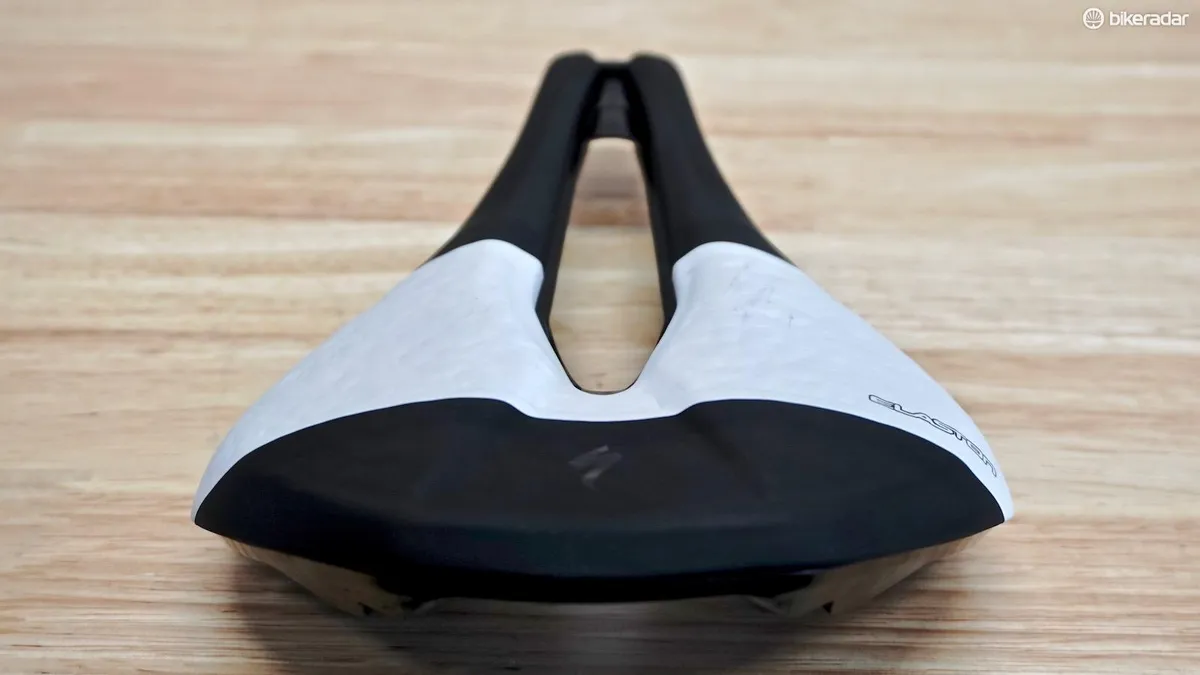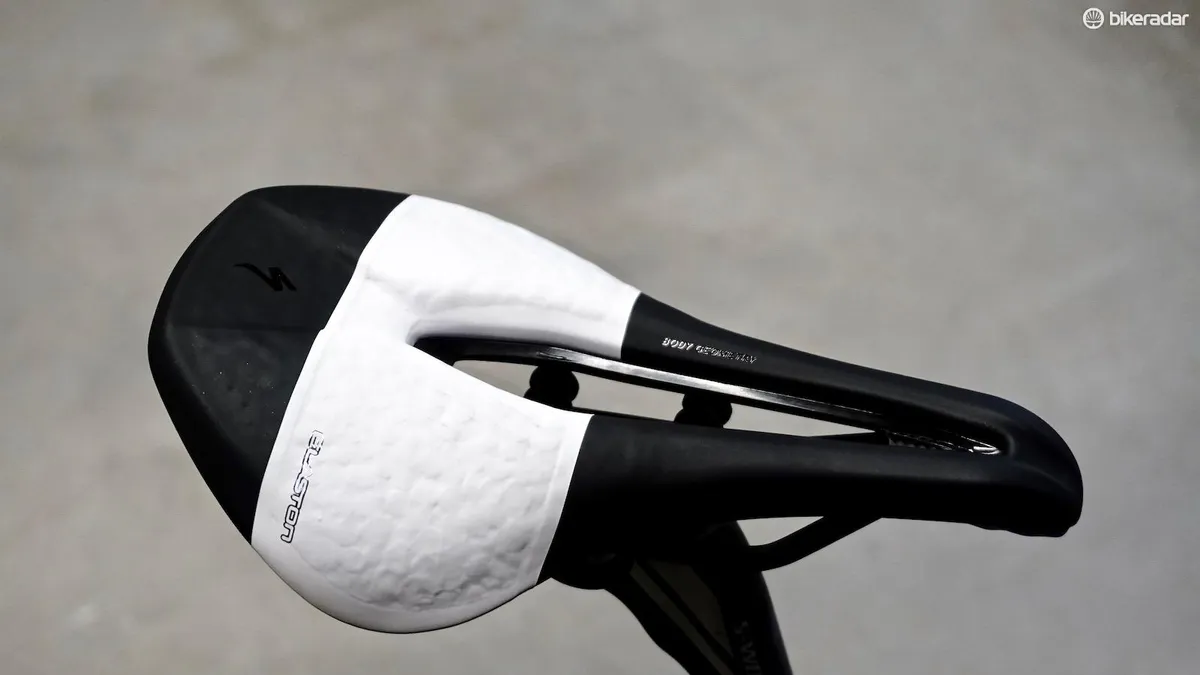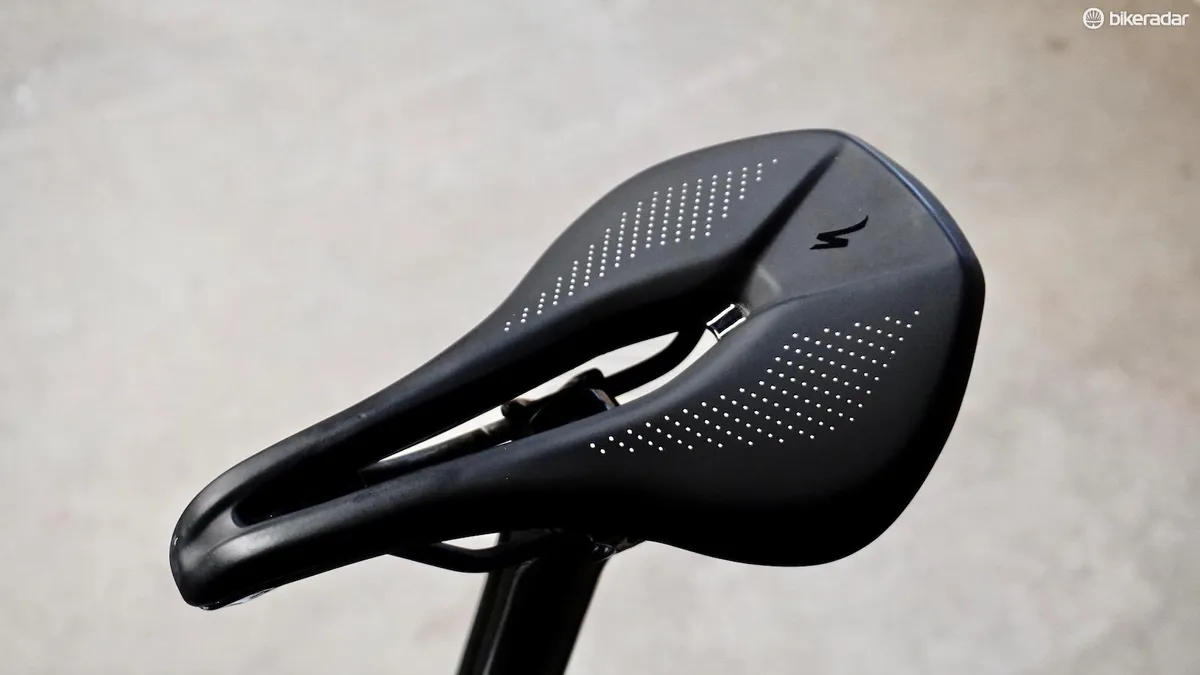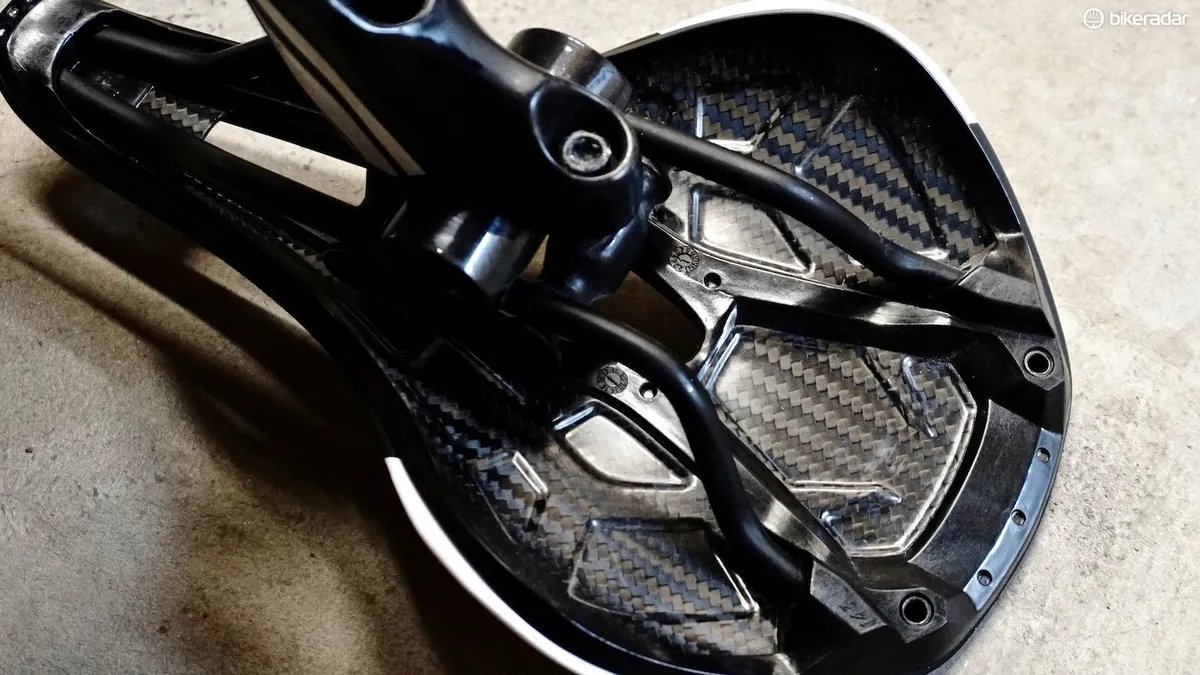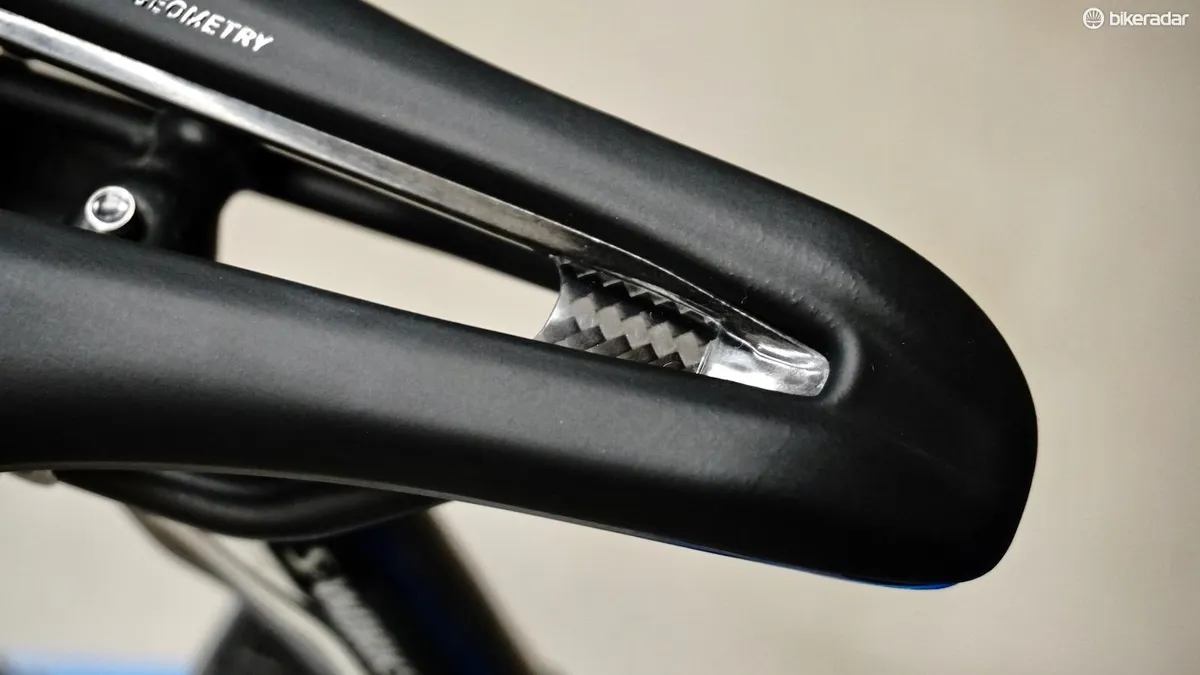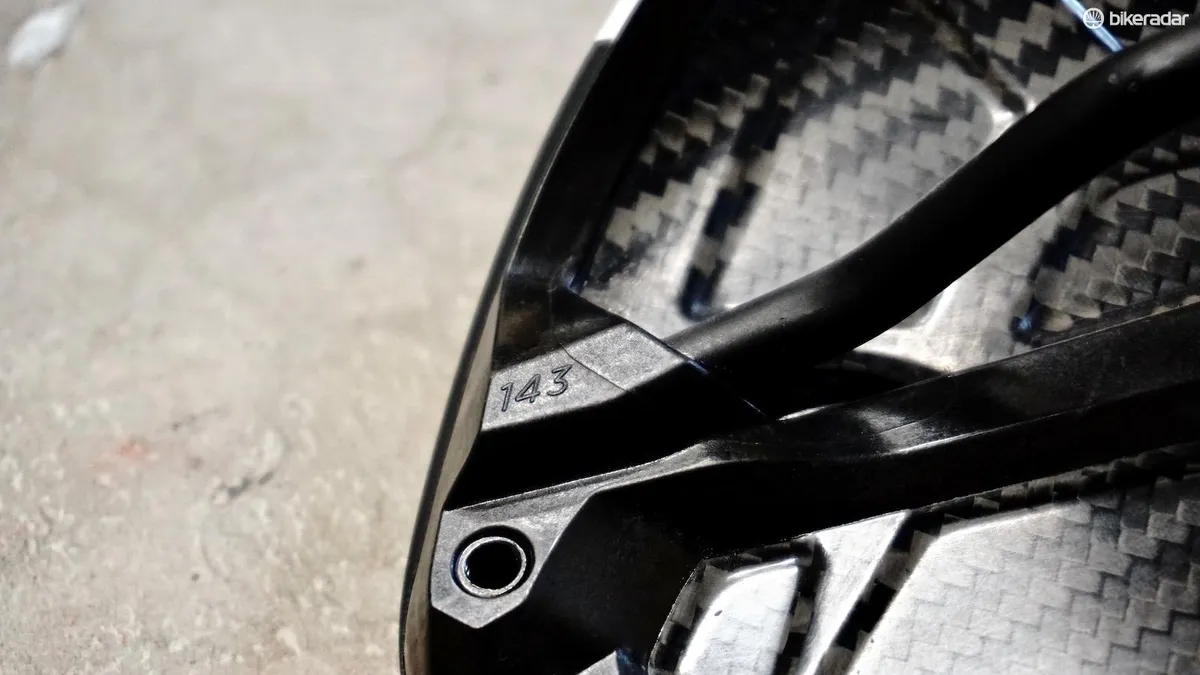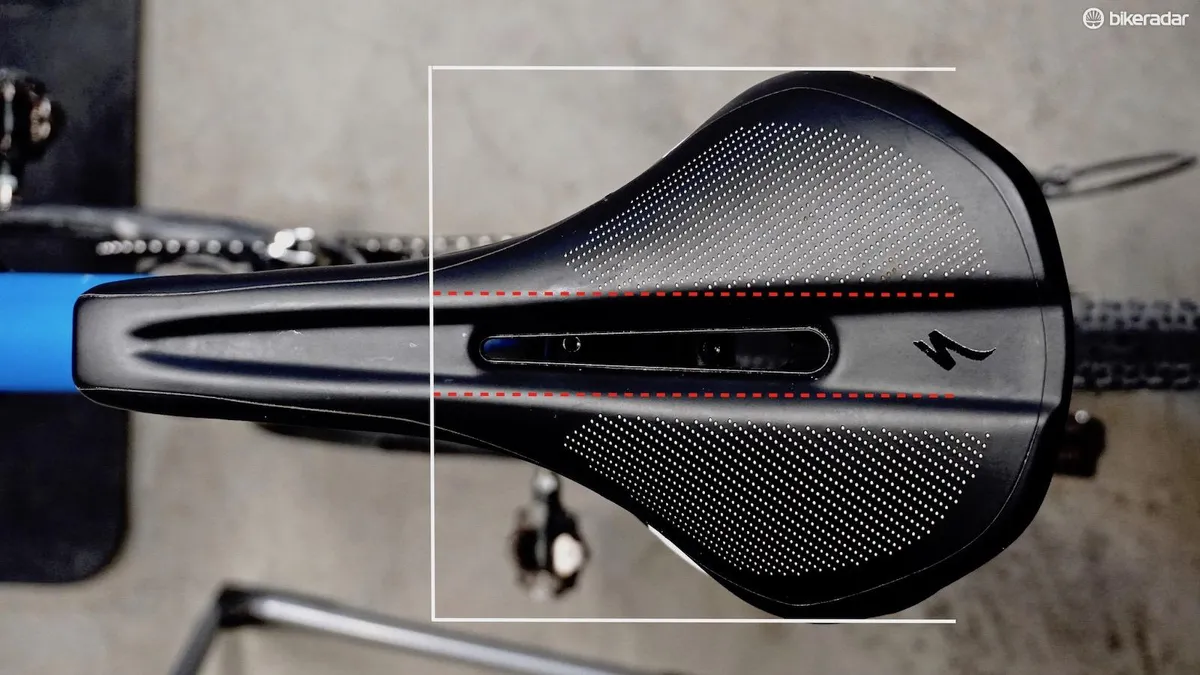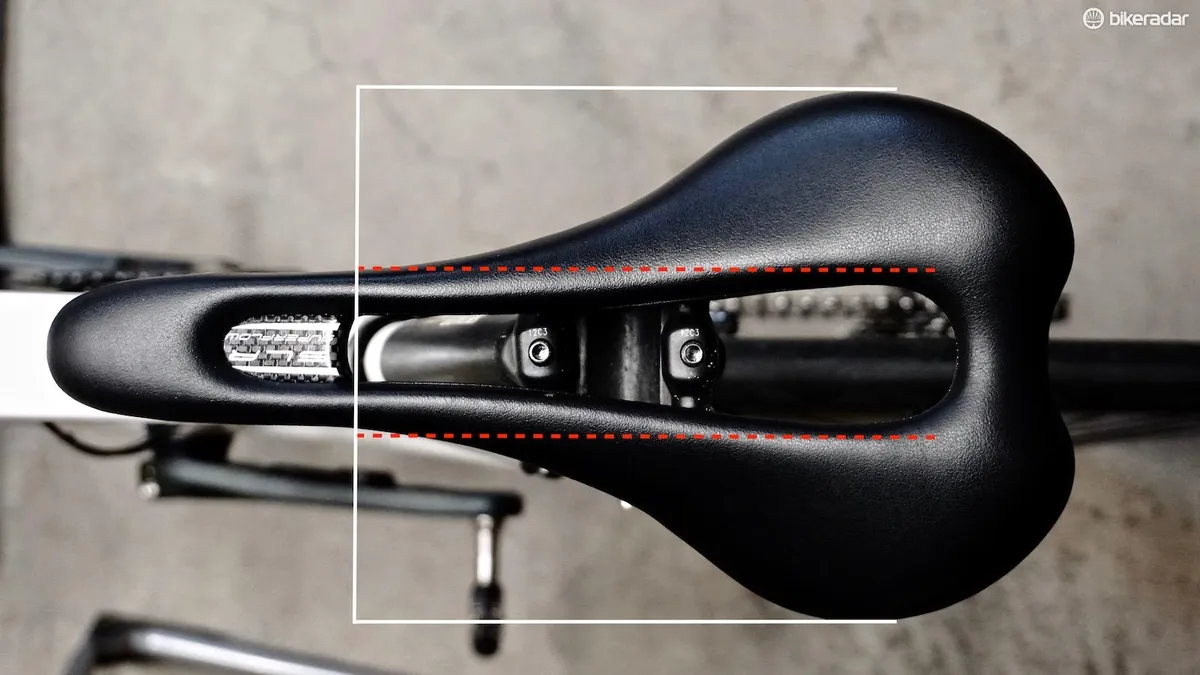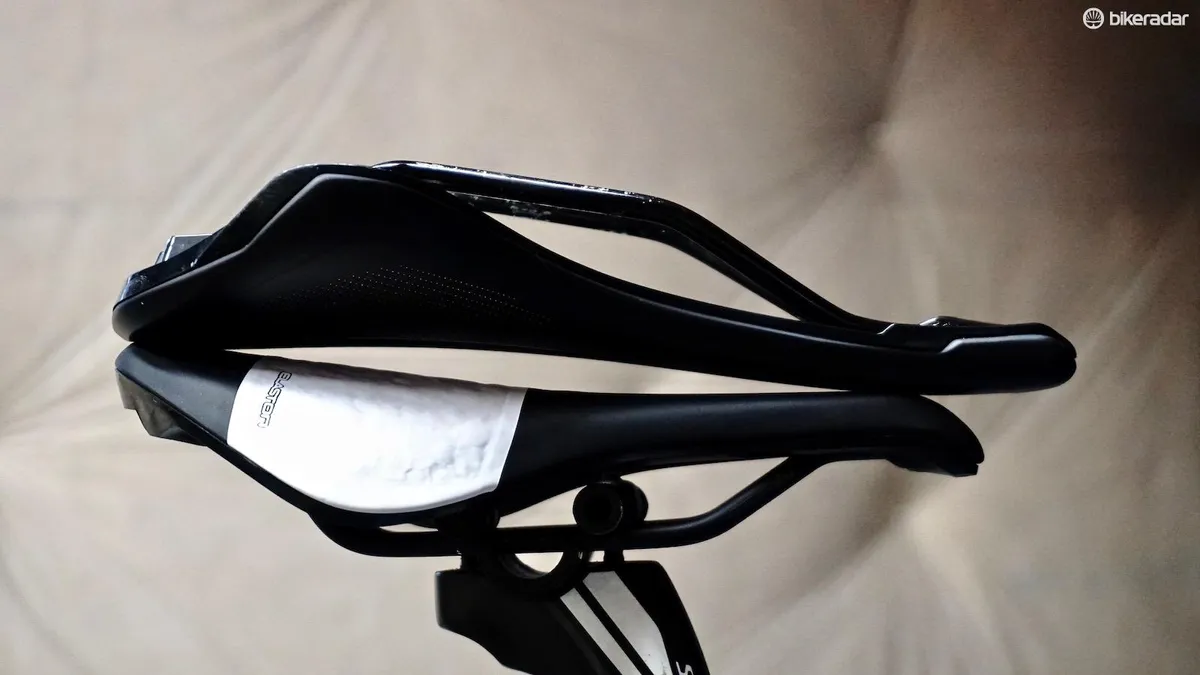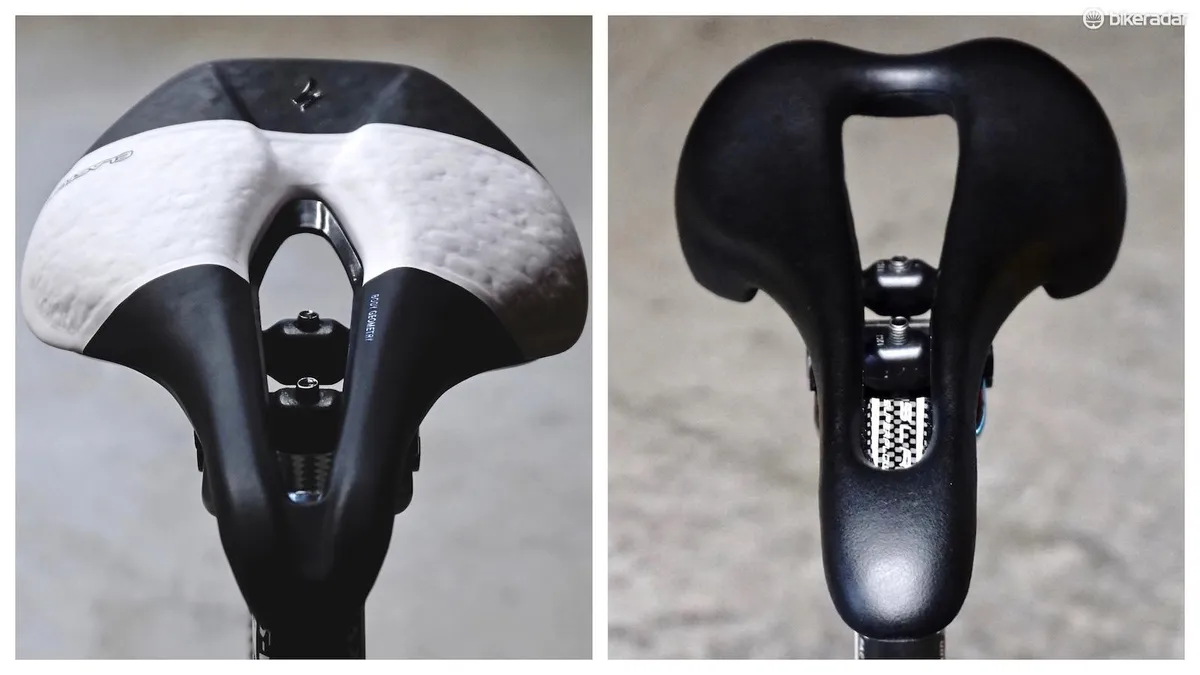The latest update to Specialized’s Power saddle adds a new material, Elaston, with comfort right where it’s needed under your sit bones. Road, gravel and mixed-terrain riders may find this latest tweak a deal-maker for what could have been a deal-breaker in the past.
Specialized Power Elaston details
- Material: Elaston + PLU foam
- Sizes: 143mm, 155mm
- Shell: FACT Carbon
- Rails: Hollow titanium
- Application: Road, gravel, TT, Tri
- Weight: 231g (claimed)
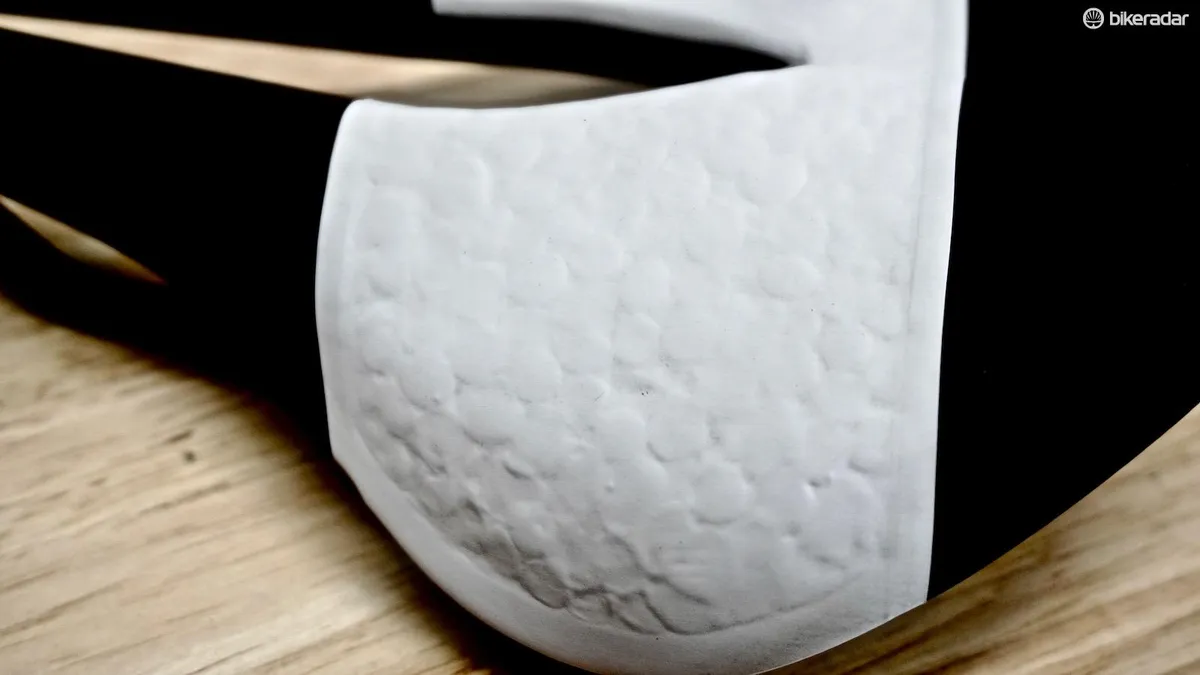
Power to your… underside
Before jumping in to the specifics of the Elaston model, it’s worth highlighting what makes the Power so popular.
The saddle has a wider-than-usual cutout. The development of the saddle came at the request of a women’s sponsored team, Lululemon.
Several of my media colleagues carry the Specialized Power in their travel bags for product launches and ride events. It’s gained broad acceptance from riders, racers, media, bike shop folks (in Specialized dealers anyway), and bike fitters who have access to them.
- How to get your bike saddle height right
- Revealed: The 10 biggest bike fit myths
- Guru Fit: a new approach to bike fitting — video
- How to install and adjust cycling cleats
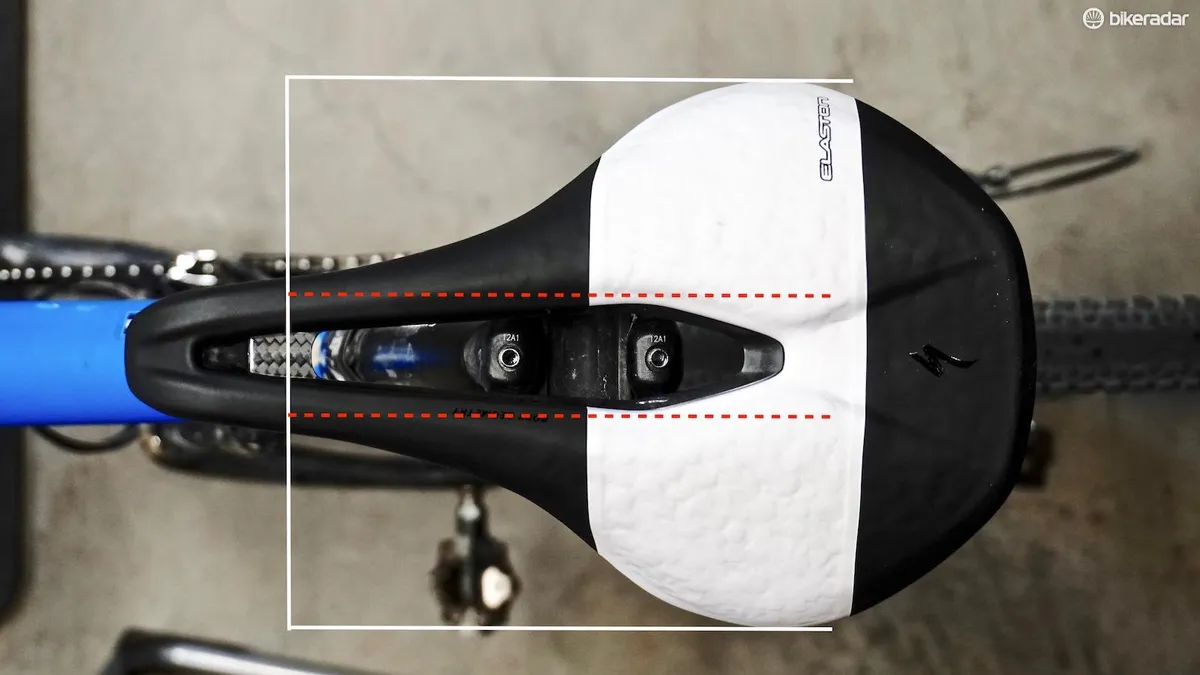
What sets the saddle apart from many others is more than the shape from front-to-back or side-to-side. And it’s more complex than just having extra cutout space. Furthermore, it’s not the uniqueness of its length or its shape from a bird’s-eye view — but these things do have a small influence on the total comfort.
What creates the rave reviews is the ratio of three things: overall seat width, cutout width, and effective seating area. Sound like I’m overthinking a seat? Follow along and let’s find out.
The benefit of adjusting the cutout width with the overall width is enormous, as evidenced by the Power
A quick history of cut-out saddles
Dr. Roger Minkow, who Specialized contracted, created the Body Geometry legacy. He worked with European researchers and brought science to bicycle saddles by measuring penile blood flow and eventually pressure mapping.
Members of his teams have continued the work and today nearly every fit-centered brand (Trek, Specialized, SMP, Cobb, Selle Italia, etc.) has adopted his design features — mainly cutouts in the centerline of the seat and elevated areas for the sit bones.
As a proctologist, Minkow wanted to protect the vascular and nervous tissues that were clearly being violated. He elevated the perch for the sit bones (ischial tuberosities), making space for the areas where sensitive and delicate tissues rested.
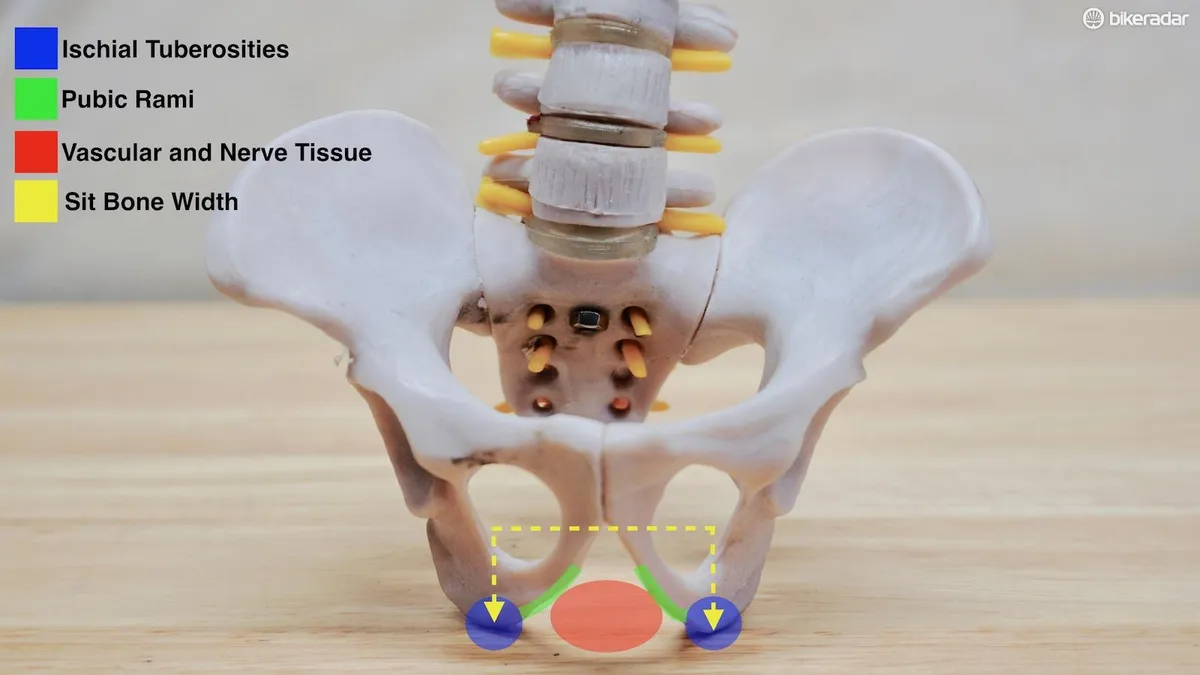
Regardless of the interpretation of research on the matter, of which both sides are well documented, today almost every seat manufacturer produces models with cutouts and elevated effective seating areas.
Other brands have also followed Minkow, and subsequently Specialized’s lead by producing multiple widths of seat. Various widths are meant to accommodate the fact that sit bone width is not a universal standard between people. There is a range of roughly 7–14cm, influenced by gender, age and genetics.
But what has been plaguing the bike industry is the reluctance to recognize the correlation between total saddle width (influenced by sit bone width) and cutout width (also an artifact of sit bone width). Currently, cutouts are the same size regardless of the total width.
The wider the sit bones are apart, the more exposed sensitive tissues will be. Doesn’t it stand to reason that as the sit bone width increases, total width of the seat increases, and thus the total width of the cutout should too?
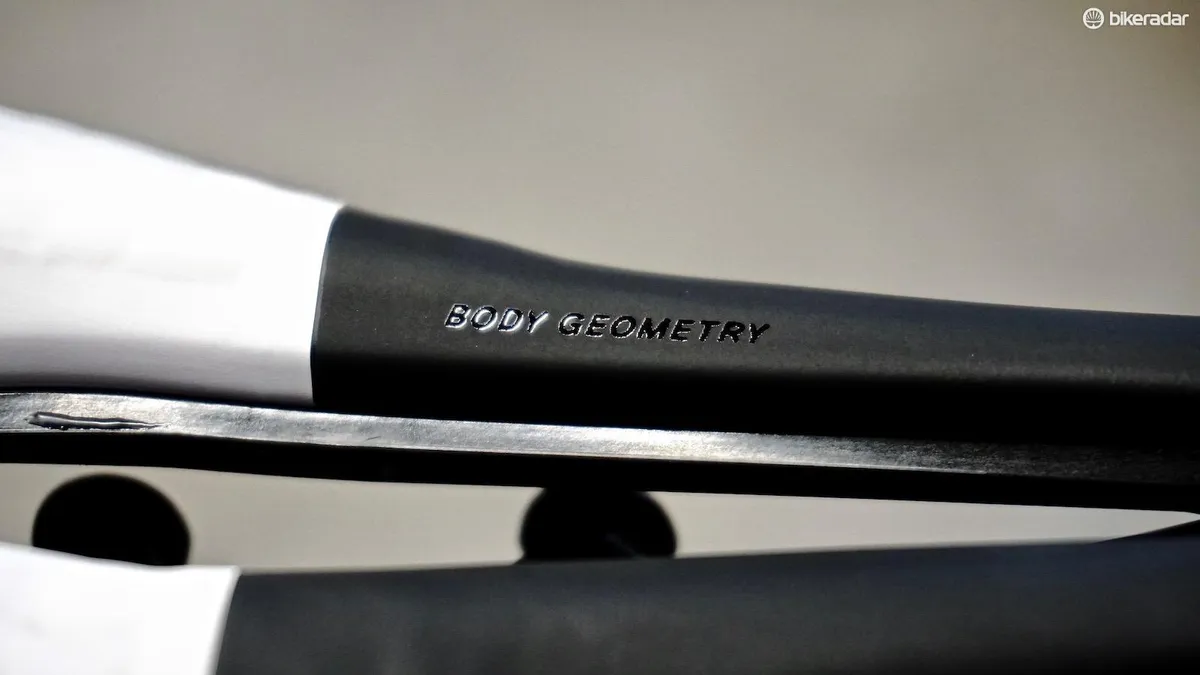
I’m pretty far from a saddle manufacturing expert, but I’d bet a day's wage that the only reason this hasn’t been done is cost.
Cost aside, the benefit of adjusting the cutout width with the overall width is enormous, as evidenced by the Power, which has a much larger cutout than other models of the same overall width (in the Specialized family anyway).
The result of this is evidenced by how many positive reviews the seat has received and why so many media (with access to any seat they want) have made the Power their go-to perch.
1,000 miniature pillows
Now that the sit bones have their established platform, and the midline is free from any obstruction, this means that Power riders have pressure on two very small parts of the anatomy, the sit bones, or ischial tuberosities.
The only complaint about the Power, for some riders, is that the isolated pressure that results from such excellent anatomical support can be a tad uncomfortable.
The solution was more padding, but making it softer is difficult in that foams don’t last very long when they’re exposed to such isolated pressure, and they’re largely influenced by heat and cold.

Enter Elaston — the magic foam-ish solution to padding that doesn’t pack down and is predictable in performance regardless of heat and cold. Or so we’re told.
I got the Elaston Power in June and have ridden several thousand miles on it since then. It withstood a Midwestern US summer and now a Pacific Northwest US winter, and it feels the same underneath me day after day.
Please pardon the cliché, but it does ride like a thousand little pillows under my delicate bones. Elaston is to bike saddles what latex and natural rubber are to mattresses — game changing.
For me, the Power Pro Elaston has encouraged more gravel riding — more specifically, more seated gravel riding. If the Power is in your wheelhouse and you’re looking for just a touch more comfort, this latest release will hit the target.
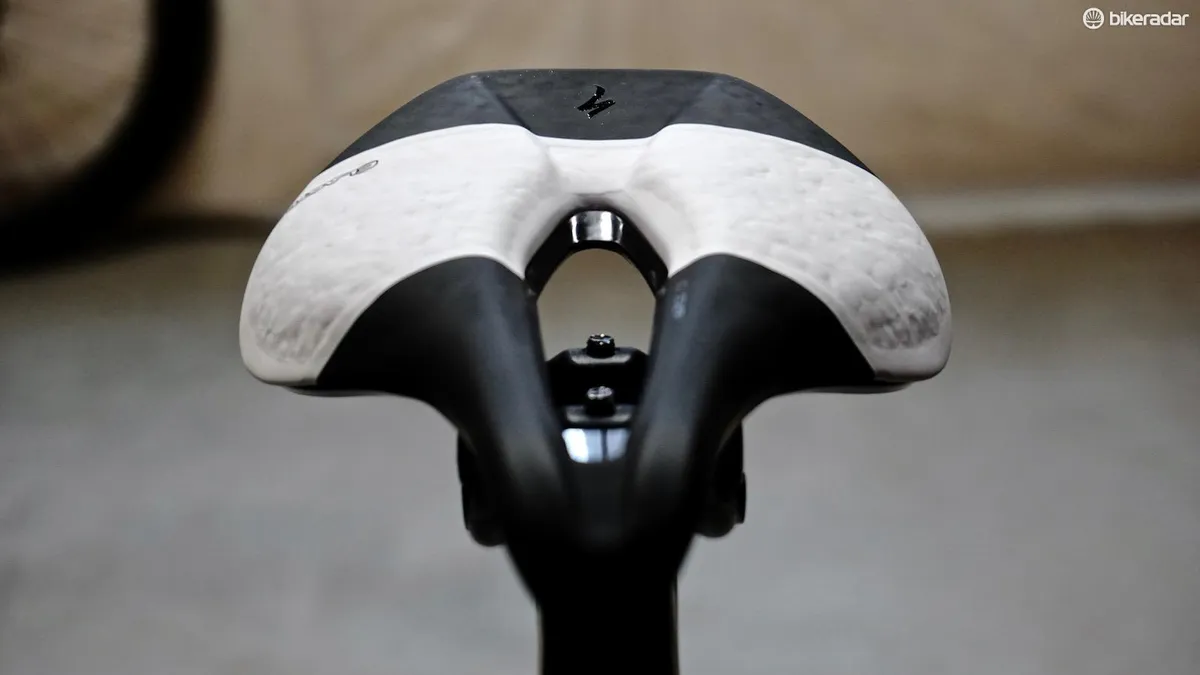
The greatest ever?
Obviously, I’m a fan of the Power; it changed how I can sit on a bike in a positive way. I’ve lowered the front end of my bike 16mm and feel more power coming from the caboose. I can rotate my pelvis further anterior, without experiencing any pinching or pressure on soft tissues.
Aero aside, this also means a healthy lumbo-pelvic position is maintained, protecting the delicate nerve and muscular tissues surrounding the spine.
My complaints? Really, just the graphics and the absence of a cheaper model.
I’m not a fan of being a rolling billboard. The black-and-white or two-tone black version both have a callout for the Elaston feature. Fine, Specialized, we get it, you want us to talk about how amazing the new saddle is. Just give an option for those of us who want a more subdued visual.
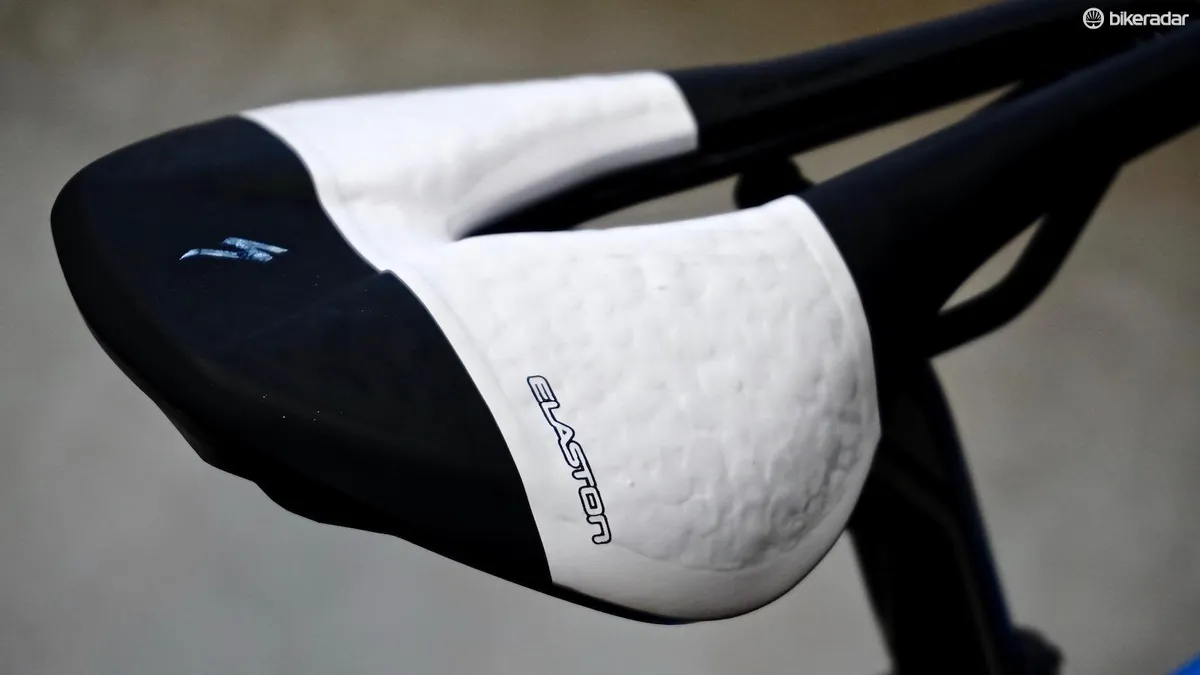
Second, the Power Elaston is only available in the Pro model, which is a carbon shell with hollow ti rails, and it’s not cheap. This design could be a real gamechanger for entry-level cyclists on the cusp of deciding whether or not to stick with cycling. So come on, Specialized, get ’em comfortable and let’s keep them in our gang.
Five-star ratings are for perfection. While the Power Elaston itself is as close to saddle perfection I’ve ever found, the cost is prohibitive and the aesthetics are a tad on the arrogant side. If neither of those factors have an effect on your choice, consider it five full stars.
